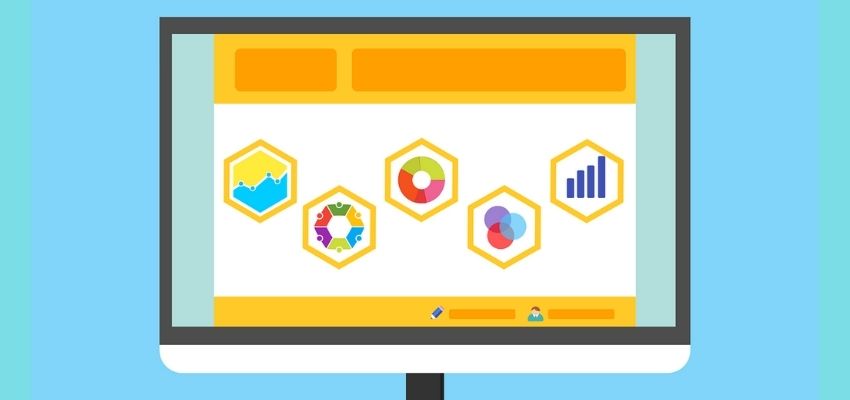The Flywheel is one of the most sophisticated concepts in marketing; it developed alongside the evolution of sales funnels from a linear methodology to a circular methodology which allows it to leverage its own momentum to sustain itself and create more efficacy.
What’s the Difference Between the Flywheel and the Sales Funnel?
The sales funnel is a strategy based on using every pillar of inbound sales to attract new clients and guide them from start to finish through the process ending in conversion. Its main emphasis is attracting qualified leads and creating attractive content.
Although the flywheel continues to rely heavily on the sales funnel’s typical components, it goes one step further and focuses on wowing the current clients so they become word of mouth promoters for the company and generate a virtuous cycle of repeat business, rehires, and recommendations.
Why is it so Important to Gain Customer Loyalty and Wow Your Current Clients in the Flywheel?
It can be argued that the Flywheel is the strategy that’s aligned most closely with the goal of marketing: selling things not once, but becoming a fundamental and permanent part of a client’s lifestyle. A few examples of this are designers that are “married” to Apple, photographers that only shoot with Canon equipment, families that only drink Coca-Cola at mealtime, or freelancers who work on projects solely through Workana.
Not only are these users the ideal clients who maintain an active purchase cycle, they also tend to be enthusiastic promoters of our products and services.
Consciously or unconsciously, we’re all sources of free advertising for brands that we like, and more often than not, we’ve bought things based on a friend’s recommendation. In fact, the standard user plays an increasingly significant role in their purchase process, meaning that it depends less on vendors and advertising and more on the information generated by others users looking for things by themselves and, of course, direct recommendations.
See also: Storytelling: How to weave compelling brand stories
How Do I Transition From Sales Funnel to Flywheel?
The most important thing to keep in mind is that although it may seem simple, an optimized flywheel depends on a solid inbound marketing structure in order to work properly. In fact, the leading digital marketing software providers are already starting to adapt their features from funnel to flywheel. If you’re already using sales funnels with good results, your business or company is ready to scale the model to flywheel.
Otherwise, we recommend that you review your general inbound marketing strategy with one of our expert freelancers first.
Remember that the main difference between the previous model and the new model is that the first has a linear focus on conversion while the second model uses a cyclical approach of customer loyalty. Conceptualizing this strategy takes the form of a wheel which has two axes that keep it turning:
1. Maximize Your Efforts:
Bringing in new clients and strengthening sales cycles is the fuel that that keeps a flywheel going on a straight path.
This means constantly adapting to the market’s needs and emphasizing strategies that generate the best return on investment while remembering to reinforce the basic pillars of digital marketing. In order to achieve this, it’s important to:
- Review our Buyer Persona (maybe the way they purchase your product or service, their challenges and expectations have changed since the last evaluation.)
- Obtain all information available about client interaction with the brand from the first interaction to post-sale service.
- Identify key metrics, in other words those that directly influence repeat business, customer loyalty, and recommendations.
- Personalize customer service and offer them an experience that’s tailored to their needs.
- Make the process of purchasing products or additional services as easy as possible for the user by using upselling and cross-selling strategies that they manage themselves.
- Boost the sales cycle by strengthening customer loyalty and word of mouth recommendations.
- Offer rewards for referrals, incentivizing users to become promoters for your brand.
- Offer commitment-free trial options.
- Automate processes using the latest technology software.
We also recommend: Chatbots: Why is it important to improve user experience during quarantine?
2. Reduce Points of Friction:
On the other hand, the fewer obstacles and difficulties that the client faces during their shopping trip, the greater amount of inertia the flywheel will generate. Bottlenecking, where one part of the wheel is optimized but not the following part, is one of the main problems that can drive a huge amount of effort toward dead end results.
Eliminating the following reduces friction:
- Any deceiving request or any request that gives the user a reason not to trust the brand, for example, requesting a user’s banking information before giving them a free trial.
- Aggressive sales strategies or sales people. Let the client come to you, not the other way around.
- Non-customizable buying options that force clients to buy features or accessories.
This article may be helpful: Types of newsletters that will help you with branding, sales and loyalty building
To Learn More about Flywheel
- The marketing funnel is dead and the Flywheel has arrived – By New Breed Marketing
- How the Flywheel Killed HubSpot’s Funnel – By HubSpot
- [2020 GUIDE] Replace Your Funnel With a Flywheel – By 310 Creative
- Flywheel Marketing: The New Growth & Revenue Model for Businesses – By VWO
- Building a Marketing Flywheel – De MOZ
- How to build disruptive strategic flywheels – De Strategy+Business
- 6 Easy Steps to Ditch the Funnel & Get Your Flywheel Spinning – By UX Digital
What is Workana?
We invite you to know Workana, the leading freelance marketplace. We’ve been working since 2012 to keep connecting companies and entrepreneurs with remote workers of the most diverse specialty areas.






